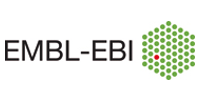 HMMER: Fast and sensitive sequence similarity searches
HMMER: Fast and sensitive sequence similarity searches
Date: 14 November 2018
A cornerstone of modern molecular biology is the electronic transfer of annotations form a few experimentally characterised sequences to the vast number being determined from DNA modern sequencing technologies. In general, sequences that are evolutionarily related share some degree of similarity, and sequence-search algorithms use this principle to identify homologs. The requirement for a fast and sensitive sequence search method led to the development of the HMMER software and associated website housed at EMBL-EBI, which in the latest version, uses a combination of sophisticated acceleration heuristics and mathematical and computational optimisations to enable the use of profile hidden Markov models (HMMs) for sequence analysis.
In this webinar, we will cover some of the basics about the HMMER algorithm and the use of the HMMER via the website.
Contact: Melissa Burke - webinars@ebi.ac.uk
Organizer: European Bioinformatics Institute (EBI)
Host institutions: EMBL-EBI
Capacity: 200
Event types:
- Workshops and courses
Scientific topics: Proteins, Sequence analysis, Sequence search results
Activity log

 EMBL-EBI
EMBL-EBI
